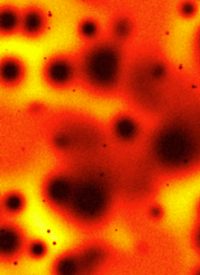
Some 20 independent news sources published the findings emanating from at least three independent scientific studies and some dozen scientists. All seemed to concur that episodic sunspot activity lasting anywhere from 70 to 150 years is responsible for wild swings in weather on Earth as well as on other planets within our solar system. This 70- to 150-year cycle has embedded within it several shorter-term, 11-year solar cycles (“mini-cycles,” for lack of a better term), “that we all should have learned about in high school,” advises Dr. Michael Coffman, president of Environmental Perspectives, Inc.
Coffman explains that “everyone expected a normal cycle this time around. It hasn’t happened. The sun has massive ‘conveyor belts’ of plasma that circulate every 11 years. Our current solar cycle, Cycle 24, is very weak and scientists are now realizing the internal ‘conveyor belt’ is breaking down just as it did 150 years ago.” [See graph.]
“The number of sunspots (or, solar eruptions),” explains Coffman, “is already the lowest they have been in over a 100 years. [See the stunning graphic by clicking “here” at the bottom of the embedded link above.] There are indications that Cycle 25 may not have any at all! This hasn’t happened since the mid-1600s to the mid-1800s, when Earth experienced what is termed ‘the Little Ice Age.’” The “Little Ice Age” had no sunspots, and global temperatures dropped by 3 degrees Celsius. But in contrast to what people are led to believe by "global-warming" ideologists, the cooling did not turn out well. Coffman points to historical details showing that the dip in global temperatures caused, instead, massive crop failures, famine, and disease.
Unfortunately, science organizations that are responsible for grants and government contracts to scientists don’t know exactly how to spin these latest findings (much less their ramifications) in view of the politically correct necessity of maintaining man-made global-warming dogma to justify various legislative schemes of wealth redistribution now on the table — carbon footprints, cap-and-trade, etc. — all of which have become essential to the liberal establishment that holds the purse strings of research and development (R&D).
It’s no secret that many scientists have long had inconvenient misgivings about global-warming data, and now it appears that doomsayers such as Al Gore could come across as fools. But try telling that to politicians who have already bought in to the dogma for funding and electability purposes! They have even bent over backwards to aid and abet a recasting of the popular jargon, rephrasing “global warming” as “climate change” when it got a black eye after scientists’ personal e-mails questioning the data started surfacing last year.
For many readers, a refresher course in Earth science and astrophysics may be in order. One reason the public has been amenable to global-warming doctrine (and are even frightened by it) is that it covers a broad area of science, made more complex by newer spinoff disciplines, such as computer modeling, which were not typical 1960s college science curricula. The problem is made no easier by modern public-school science courses. Youngsters who never studied levers and pulleys, much less took a course in basic chemistry and physics, may view Al Gore’s CD An Inconvenient Truth in high school and decide it makes sense. Given the government school system’s liberal-left bias — including “professional” associations all aimed variously at science and math teachers, school principles, and district administrators — alternate theories don’t get an airing in the classroom. Add to that typical newspaper and magazine coverage, both print and online: They all have word-count limitations and are not meant as teaching tools. Consequently, the hapless citizen must be willing, on his or her own, to click on those links and dig deeper to understand either the research or the logic behind the theories.
If one reads many sources, component parts of the overall issue often falls into place. From National Geographic News (NGN) science reporter Victoria Jaggard, for example, we learn that “sunspots are cool, dark blemishes visible on the sun’s surface that indicate regions of intense magnetic activity.” Scientists have been aware of sunspots for centuries — some of them being wider than planet Earth. In recent decades, researchers have been using sunspots to track the sun’s magnetic highs and lows.
Then “the National Solar Observatory's Matt Penn and his colleagues analyzed more than 13 years of sunspot data collected at the McMath-Pierce Telescope at Kitt Peak, Arizona.” (Photos are linked on the NGN site.) That long-term project helped set off concerns of an impending “Little Ice Age.”
A June 15 Los Angeles Times article tells us that sunspots “are caused by pockets of intense magnetic activity that disrupt the normal circulation of heated gases on the sun’s surface, leading to areas of cooling.” Dr. Coffman explains that these conditions can create solar flares and more violent coronal mass ejections of plasma into outer space. When the sun is active with these events (every 11 years), the resulting solar winds interact with cosmic radiation in a way that heats the Earth, and there’s nothing anyone can do about it.
“But the opposite is also true,” cautions Coffman. “When there are very few sunspots, solar flares, and coronal mass ejections, the earth cools. In the case of the “little Ice Age,” the 3-degree Celsius cooling period caused the Thames River and the Holland canals to freeze over every year.” Moreover, global cooling is much more dangerous to humanity than global warming, he says — a point that is absent from most discussions on the subject available to the average person.
If Coffman’s concerns prove correct, it is highly relevant to Mitt Romney’s recent statement, championed by none other than Al Gore. Romney released the following in his “memoir,” judiciously timed to coincide with his 2012 presidential bid:
I believe that climate change is occurring — the reduction in the size of global ice caps is hard to ignore. I also believe that human activity is a contributing factor. Scientists are nearly unanimous in laying the blame for rising temperatures on greenhouse gas emissions.
Romney may regret those words, as well as the kudos from global-alarmist-in-chief, Al Gore.
Turns out there are more non-concurring scientists on the issue of global warming than most people thought, even given last year’s flap over hacked, dissenting e-mails exchanged among some NASA scientists and between a few researchers from the University of East Anglia in the U.K. Announcing the new studies June 15 was a gutsy move — even if some of the participating researchers felt they needed to equivocate just enough to appease the global-warming camp, thereby assuring (hopefully) continued funding. Unfortunately, some of their tortured explanations have compromised public understanding of the topic.
Frank Hill, associate director of the National Solar Observatory at Sacramento Peak in New Mexico, took the lead in announcing the overall findings from the three separate studies, stating that “around 2020, sunspots may disappear for years, maybe decades.”
“The fact that there are three separate lines of evidence all pointing in the same direction is very compelling,” Hill said in an Associated Press article. But, in contrast to Coffman’s assertion, he maintained there could likely be “mostly good” effects from this, including longer lasting satellites and possibly (note the caveat here) “a little less increase in global warming.” Whether Hill’s comment was meant to mollify global-warming activists, or whether he really believed it, is unclear. More tellingly, perhaps, is that the AP article noted the scientists were reluctant to discuss the global warming/climate change topic, stating that “there are questions about what this means for Earth’s climate.”
Various other articles came out the same day, with further details and the proverbial “spin” that would leave a non-expert in the field scratching his head.
A Los Angeles Times piece by Thomas H. Maugh II provided a very readable explanation of how “Hill and his colleagues [used] a process known as helioseismography, which monitors sound waves emitted by solar jet streams." He alluded to jet streams that typically precede the normal beginning of a solar cycle. They are missing, which hints again that the next sunspot cycle may be weak at best.
Maugh also alludes to the aforementioned 70-year cold stretch lasting from 1645 to 1715, as did Richard Altrock, manager of the Air Force’s coronal research program at Sunspot, New Mexico — the period during which virtually no sunspots were observed. But, oddly, neither man goes into the ghastly side-effects of that cooling period — e.g., crop failures, famine, etc.
Matt Peckham, in his piece for Techland/Time Inc., posted a “clarification,” as he called it, after-the-fact, more likely in response to editors than to average readers: “Some commenters [to the website] seem to be confused about the terms ‘global warming’ and ‘global cooling’. … A less active sun may have a ‘global cooling’ effect on the planet. [But] that doesn’t mean the impact of greenhouse gases or the average overall thermal trend are offset. In fact it has nothing to do with offsets or equation balancing.”
Peckham wasn’t alone. An AFP/US Space Sun report by Kerry Sheridan quickly switched from covering the new studies to rehashing the questionable forecasts of the UN’s Intergovernmental Panel on Climate Change.
Stephen Adams linked two documents, from 2009 and 2010, for the Telegraph, a U.K. publication. They appeared to support the studies’ findings about the confluence of events leading to a possible cooling period and a new “little Ice Age.” But then, he too switched gears and quoted Joanna Haigh, professor of atmospheric physics at Imperial College London, who claimed that “global warming could override any cooling effect on the Earth’s climate…. Even if the predictions are correct,” she said, “the effect of global warming will outstrip the sun’s ability to cool even in the coldest scenario.”
Any reader would be left wondering exactly how the developed world’s SUVs, airplanes, and fossil-fuel consumption might outpace the mighty sun or its sunspots, some of which, according to National Geographic News (see above) are wider than the Earth.
Among the most thorough examinations was an official document from the NASA-operated Solar Dynamics Observatory (SDO) in “The Timeline of Solar Cycles.” SDO’s project scientist, William Dean Pesnell, said the studies “represent the first wave of new data that should help physicists better understand the sun’s internal workings.” And Jet Propulsion Laboratory’s Bruce Tsurutani, a space weather scientist, led the team that sheds light on the time lag between solar events and Earth-based weather swings.
Any way you look at it, there’s a whole new dimension to the climate-change debate. Dr. Coffman puts it this way: “No one can predict we are going into a ‘Little Ice Age’, but it is more probable now than global warming. If we do go into another ‘minimum,’ it could get very nasty. Pray for global warming.”
_________
Beverly K. Eakman began her career as a teacher in 1968. She left to become a science writer for a NASA contractor and went on to serve as a former speechwriter and research-writer for the Voice of America and two other federal agencies, including the U.S. Dept. of Justice. She has since penned six books, scores of feature articles and op-eds covering education policy, mental-health, data-trafficking, privacy and political strategy. She (and links to her books) can be reached via her website: BeverlyEakman.com.



